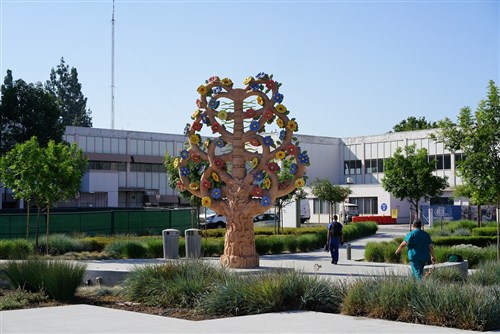Rancho Los Amigos National Rehabilitation Center (Rancho) is one of the top ranked rehabilitation hospitals in the United States, and is a public health facility with a history of excellence and innovation with a patient-family centered approach to care. Vital to the success of the Civic Art Program for Rancho is the engagement of Rancho artists from the art programs and the clinicians, researchers, staff and volunteers that form the Rancho family. The artworks created under the Los Angeles County Arts Commission Civic Art Program foster a sense of community and humanity that reflect the mission of Rancho to restore health, rebuild life and revitalize hope for persons with a life-changing illness, injury or disability, while creating a welcoming, humanizing and uplifting atmosphere for the patients, visitors and staff. Artists Deborah Aschheim, De la Torre Brothers (Jamex and Einar) and Glenn Kaino/Kainoco, Inc.’s civic artworks contribute to the healing environment and are integrated within the Campus to build a cohesive vision that recognizes the power and journey of recovery, rehabilitation and reintegration.
Vitae Telam (Web of Life) Tela de la Vida
Inspired by the “tree of life” ceramic candelabras from Central Mexico, the carved stone sculpture on the Main Plaza features carvings in Mayan-inspired flowing lines. The stem of the sculpture celebrates the advanced technology developed and applied in the Hospital campus, while the central stem features the spine and the branches evoke the ribs as structural analogies to the human body. The ceramic elements intend to show the positive aspects of plant growth and celebratory bloom. The ceramic tendrils attached to the central stem also inspire the nerves that come from between the vertebrates—a symbol of our interconnectedness. Some flowers exhibit a small green face in the center. These little faces are a reminder of the many caring people it takes to assist in the rehabilitation process which are inspired by the ceramic masks known as the “smiling boys” from the pre-Columbian culture of the Totonacs in Veracruz Mexico.










